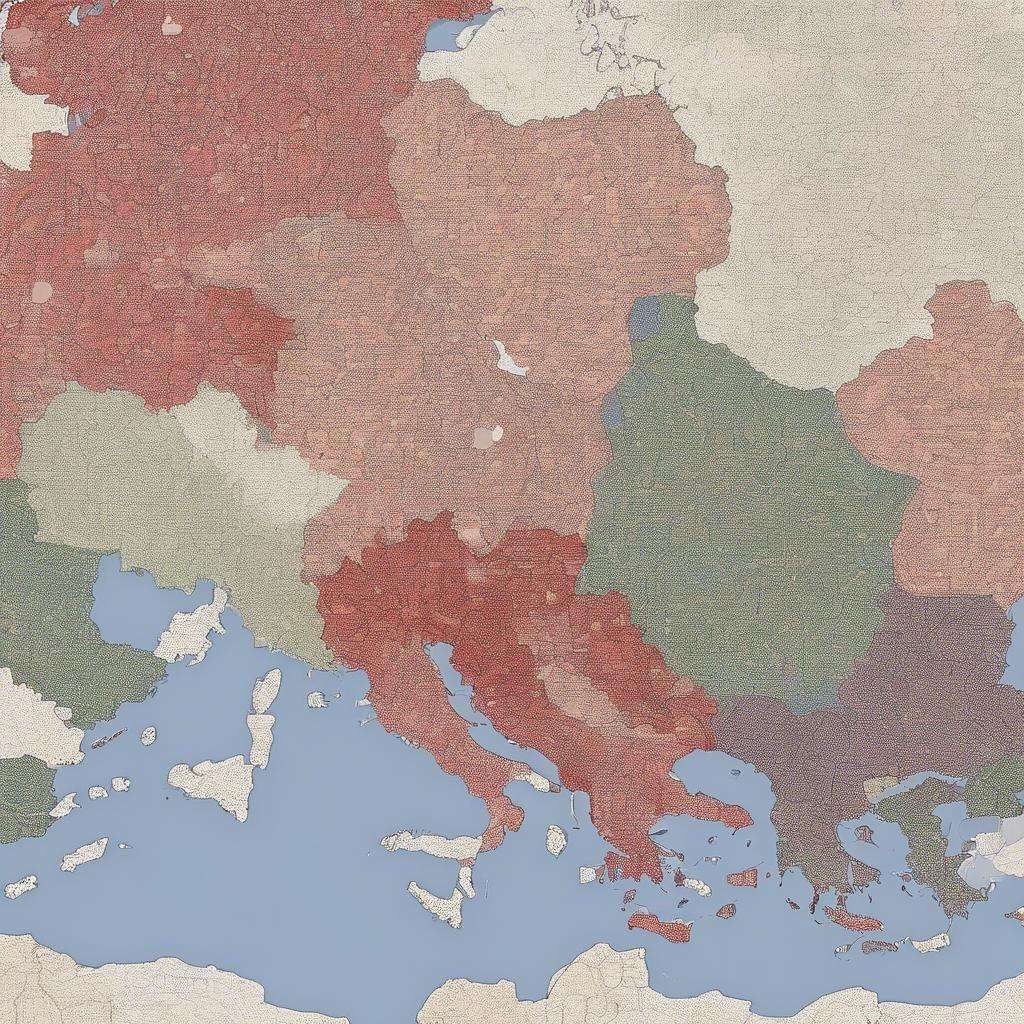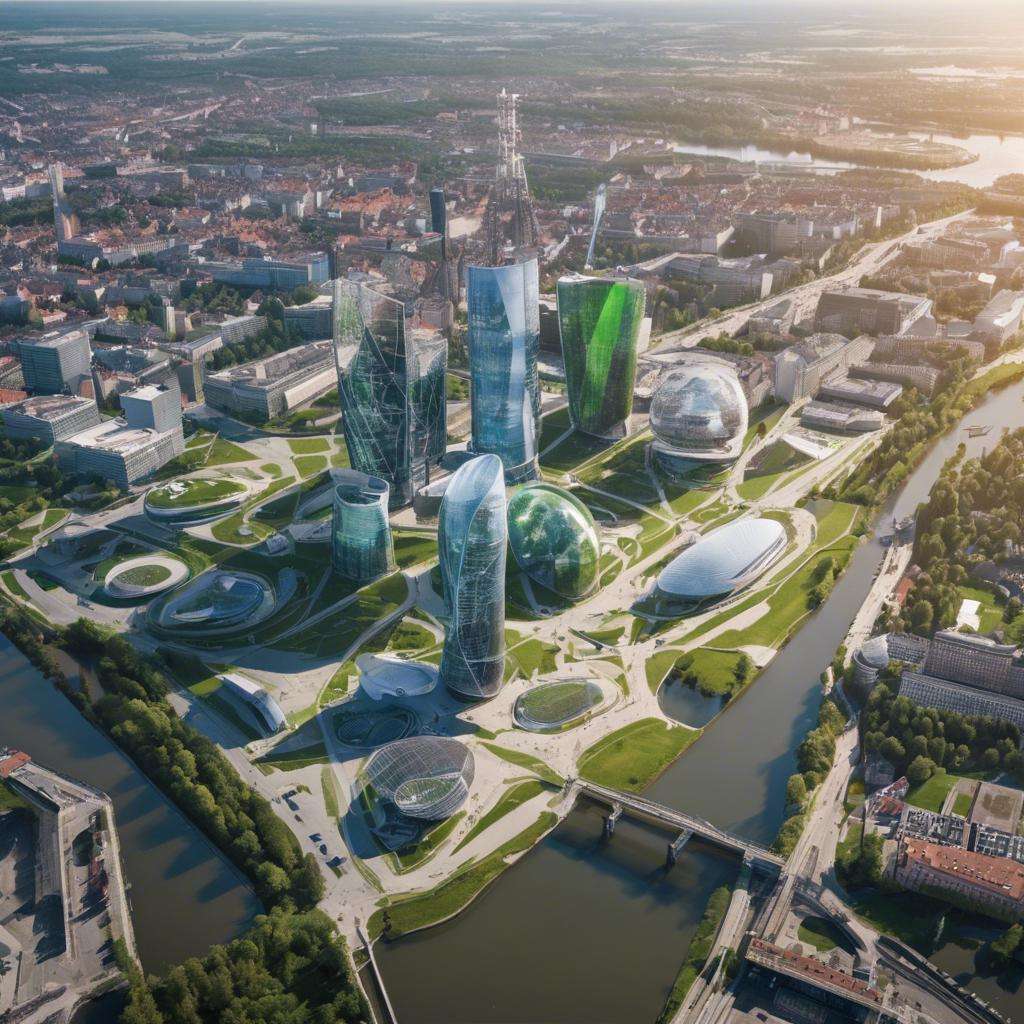Poland's Economic Landscape: Navigating Challenges and Opportunities
Poland's economy, the largest in Central Europe, is showing resilience in the face of global uncertainties. Recent economic indicators suggest a cautious but steady growth trajectory, bolstered by a robust manufacturing sector and increasing foreign investments.
The country has positioned itself as a key player in supply chains, thanks to its strategic location and skilled workforce. However, challenges remain, including inflationary pressures and labor market fluctuations.
The Polish government is implementing measures to stimulate innovation and support small businesses, aiming to enhance competitiveness on the European stage. Additionally, Poland's commitment to green energy transition is paving the way for sustainable growth, attracting investments in renewable technologies.
- Resilient economic indicators
- Robust manufacturing sector
- Increasing foreign investments
- Strategic location in Europe
- Commitment to sustainability
As Europe grapples with economic volatility, Poland's adaptability and proactive policies may set a model for navigating future challenges while seizing emerging opportunities in the global market.
Poland's Economic Growth: Trends and Future Projections
Poland, once a defining part of the Eastern Bloc, has transformed remarkably since the fall of communism in 1989. Today, it stands as one of the fastest-growing economies in Europe. This article delves into the trends that have shaped Poland's economic landscape and offers insights into future projections.
A Historical Overview of Poland's Economic Growth
Post-1989, Poland embarked on a journey of systemic reforms that transitioned the country from a centrally planned economy to a market-driven one. The introduction of the "shock therapy" reforms laid the groundwork for structural changes, resulting in consistent GDP growth. The Polish economy experienced a robust expansion, averaging around 4% growth per year between 1992 and 2019.
Key Drivers of Economic Growth
Several factors have propelled Poland's economic success:
- Integration with the European Union: Poland joined the EU in 2004, which opened doors to substantial investment flows, access to the single market, and funding for various development projects.
- Strong Industrial Sector: The automotive, electronics, and machinery sectors have blossomed, positioning Poland as a manufacturing hub in Central Europe.
- Skilled Labor Force: The country boasts a relatively young and educated workforce, attracting foreign investors seeking quality labor at competitive costs.
- Technological Innovation: Increased investment in technology and a burgeoning startup ecosystem have further anchored Poland's growth trajectory.
Recent Economic Trends
As of 2023, Poland’s GDP growth has shown resilience despite global economic challenges. After a brief dip due to the COVID-19 pandemic, the economy rebounded strongly, with a projected growth rate of around 4.5% for the upcoming year.
However, inflation has posed challenges, reaching levels not seen in decades. Rising energy costs and supply chain disruptions have pressured consumer prices, prompting the National Bank of Poland to adjust interest rates to curb inflation.
Future Projections for Poland's Economy
Looking ahead, Poland's economic outlook remains optimistic, contingent on strategic investments and policy adaptations. Analysts foresee several critical trends:
- Green Transition: Poland is increasingly focusing on sustainable energy and green technologies, aiming to reduce its carbon footprint while leveraging EU funding to transition towards a low-carbon economy.
- Digital Economy: The digitalization of various sectors is expected to accelerate, with significant investments in IT and infrastructure that could enhance productivity and economic resilience.
- Labor Market Developments: As demographic challenges emerge, including an aging population, focus on talent retention and migration policies will be essential to maintain workforce viability.
Conclusion
Poland’s economic landscape is characterized by its adaptability and growth potential in the face of both domestic and international challenges. Its journey from post-communist revival to a dynamic market economy serves as an inspiring model. Through strategic investments, continued innovation, and a focus on sustainability, Poland is poised not only to sustain its growth but to also become a significant player in the broader European and global economy.
As investors and policymakers watch Poland's evolving economic narrative, it is clear that the nation’s strengths position it well for future success on the international stage.


Navigating Inflation: Impacts on Polish Consumers and Businesses
Inflation has become a pressing issue for nations across the globe, and Poland is no exception. Over the past few years, Polish consumers and businesses have felt the repercussions of rising prices, which have changed the financial landscape in profound ways. Understanding the drivers of inflation and its implications can help both individuals and enterprises navigate this challenging environment effectively.
Understanding Inflation in Poland
Inflation refers to the general increase in prices and the decline in purchasing power. In Poland, as in many other economies, inflation is influenced by various factors, including global supply chain disruptions, increasing energy prices, and government policies. The pandemic accentuated these issues, leading to fluctuations in demand and international trade that have directly impacted consumer prices.
Impacts on Polish Consumers
For Polish consumers, the effects of inflation are manifold. Rising prices mean that everyday essentials like food, fuel, and housing become more expensive. According to recent statistics, the cost of living has increased significantly, which has forced many households to adjust their budgets accordingly.
1. Shift in Spending HabitsMany consumers are finding it necessary to rethink their spending habits. A greater emphasis is being placed on essential goods rather than luxuries. This shift is evident in sales trends, with discount retailers experiencing a surge in popularity as consumers increasingly seek value for their money.
2. Wage PressureWhile wages have seen gradual increases, they often do not keep pace with the rising cost of living. This disconnect has led to increased financial strain on families, pushing many to explore side hustles or additional jobs to maintain their standard of living. The pressure on wages raises questions about future relationships between employers and workers, as companies aim to attract talent without compromising their profits.
3. Psychological EffectsThe uncertainty brought by inflation can also lead to anxiety and decreased consumer confidence. When prices rise unpredictably, consumers may hold off on significant purchases, which in turn affects the wider economy.
Impacts on Polish Businesses
For Polish businesses, inflation poses challenges that can threaten stability and growth. Companies must navigate fluctuating costs, changes in consumer behavior, and potential interruptions in supply chains.
1. Increased Operational CostsAs the cost of raw materials and services climb, businesses face the dilemma of either absorbing these costs or passing them on to consumers. This decision is particularly sensitive in competitive markets, where price increases could lead to losing customers.
2. Strategic Pricing DecisionsBusinesses are compelled to revisit their pricing strategies. Effective communication with customers about price adjustments becomes essential. Companies that implement transparent pricing strategies, illustrating the reasons for increases, often maintain customer loyalty even in tough times.
3. Innovation and AdaptationTo cope with inflation, businesses are encouraged to innovate. This includes optimizing supply chains, investing in technology for efficiency, and exploring new markets. Adaptability becomes key to survival, with companies needing to stay ahead of the curve to remain competitive.
Conclusion
Navigating the waters of inflation is no small feat for Polish consumers and businesses alike. As prices continue to fluctuate, staying informed and adaptable is vital. By understanding the dynamics of inflation and its impacts, consumers can make more informed financial decisions, while businesses can develop strategies to mitigate the effects and thrive in an ever-changing economic landscape.
Ultimately, resilience will define Poland's response to inflation, with stakeholders from all walks of life needing to collaborate effectively to foster a stable economic environment.
Investment Opportunities in Poland: Key Sectors to Watch in 2024
As Europe continues to navigate the complexities of economic recovery, Poland stands out as a beacon of opportunity. With its robust growth trajectory, skilled workforce, and strategic geographic location, the country offers a fertile ground for investors seeking lucrative ventures. In this article, we will explore key sectors that promise significant investment opportunities in Poland for 2024.
1. Technology and Startups
Poland's technology sector is booming, particularly in the realms of artificial intelligence, fintech, and software development. The country boasts a vibrant startup ecosystem, bolstered by government support and a growing number of incubators and accelerators. Cities like Warsaw, Kraków, and Wrocław are emerging as tech hubs, attracting both domestic and international talent. Investors can expect high returns in this dynamic sector as Polish startups continue to innovate and scale.
2. Renewable Energy
With a growing emphasis on sustainability, Poland is making significant strides towards renewable energy sources. Wind power and solar energy are at the forefront of this transition, supported by European Union policies aimed at reducing carbon emissions. Investments in renewable energy infrastructure not only promise substantial returns due to rising energy demands but also align with global sustainability goals.
3. Real Estate Development
Poland's real estate market is thriving, driven by a strong economy and increasing urbanization. Major cities are experiencing a surge in residential and commercial property developments. Investors are encouraged to explore opportunities in the housing sector, especially affordable housing projects. Additionally, the demand for logistics and industrial properties, spurred by e-commerce growth, presents exciting prospects.
4. Healthcare and Biotechnology
The healthcare sector in Poland is rapidly evolving, driven by demographic changes and technological advancements. Investment in healthcare infrastructure, pharmaceuticals, and biotechnology is becoming increasingly attractive. With an aging population and a growing emphasis on health and wellness, stakeholders who invest in this sector can expect robust growth and returns in the coming years.
5. Transportation and Logistics
Poland's strategic location in Central Europe makes it a key player in transportation and logistics. The country is enhancing its infrastructure through significant investments in roads, railways, and ports. As global supply chains become more complex, investing in logistics services and transport infrastructure offers a promising path for growth. This sector is poised for expansion as the demand for efficient logistics solutions continues to rise.
Conclusion
As 2024 approaches, Poland presents a range of investment opportunities across various sectors. From technology and renewable energy to real estate, healthcare, and logistics, the potential for growth is immense. Investors looking to capitalize on these trends will find a supportive business environment and a government committed to fostering economic development. By carefully evaluating these key sectors, investors can position themselves for success in the evolving Polish market.

